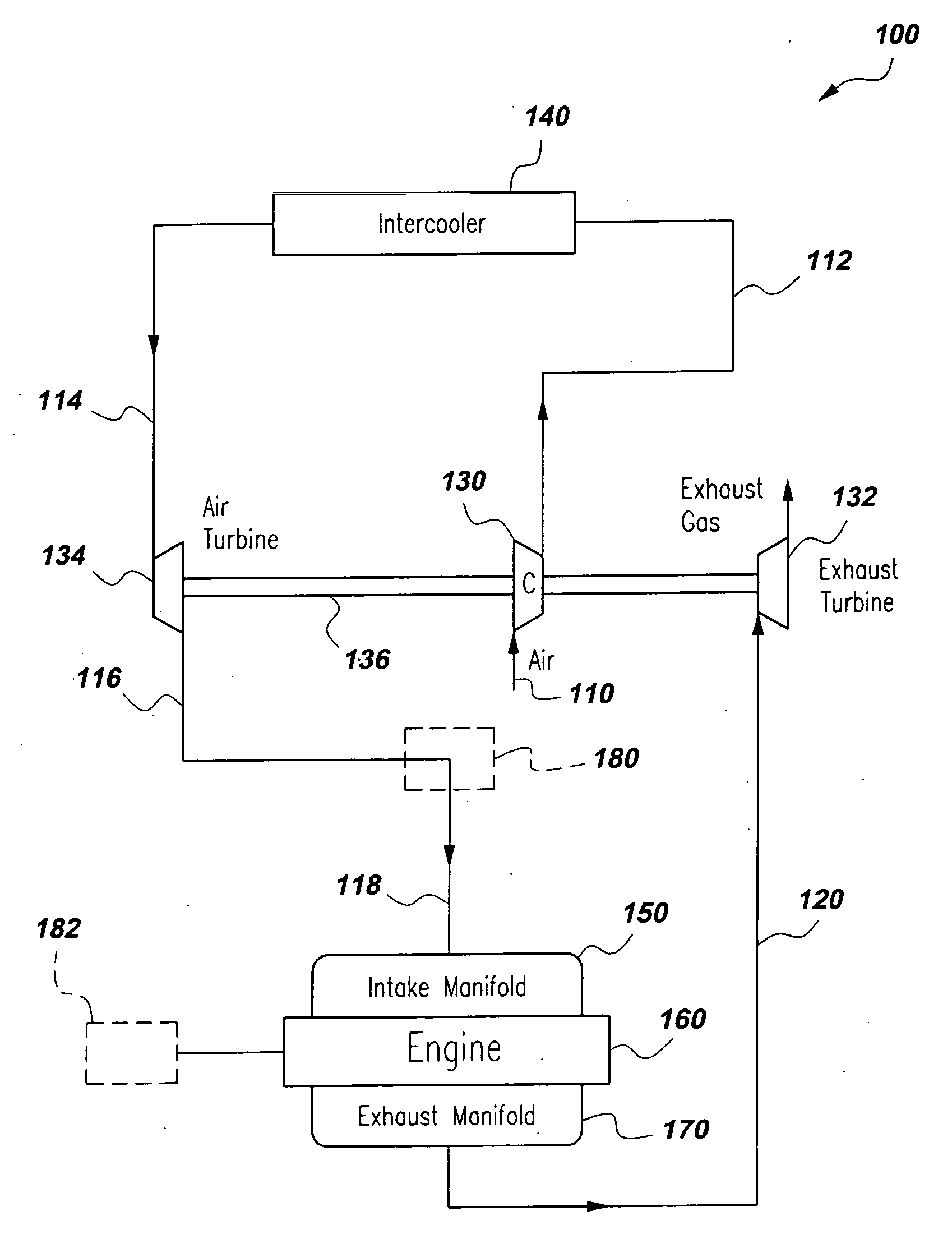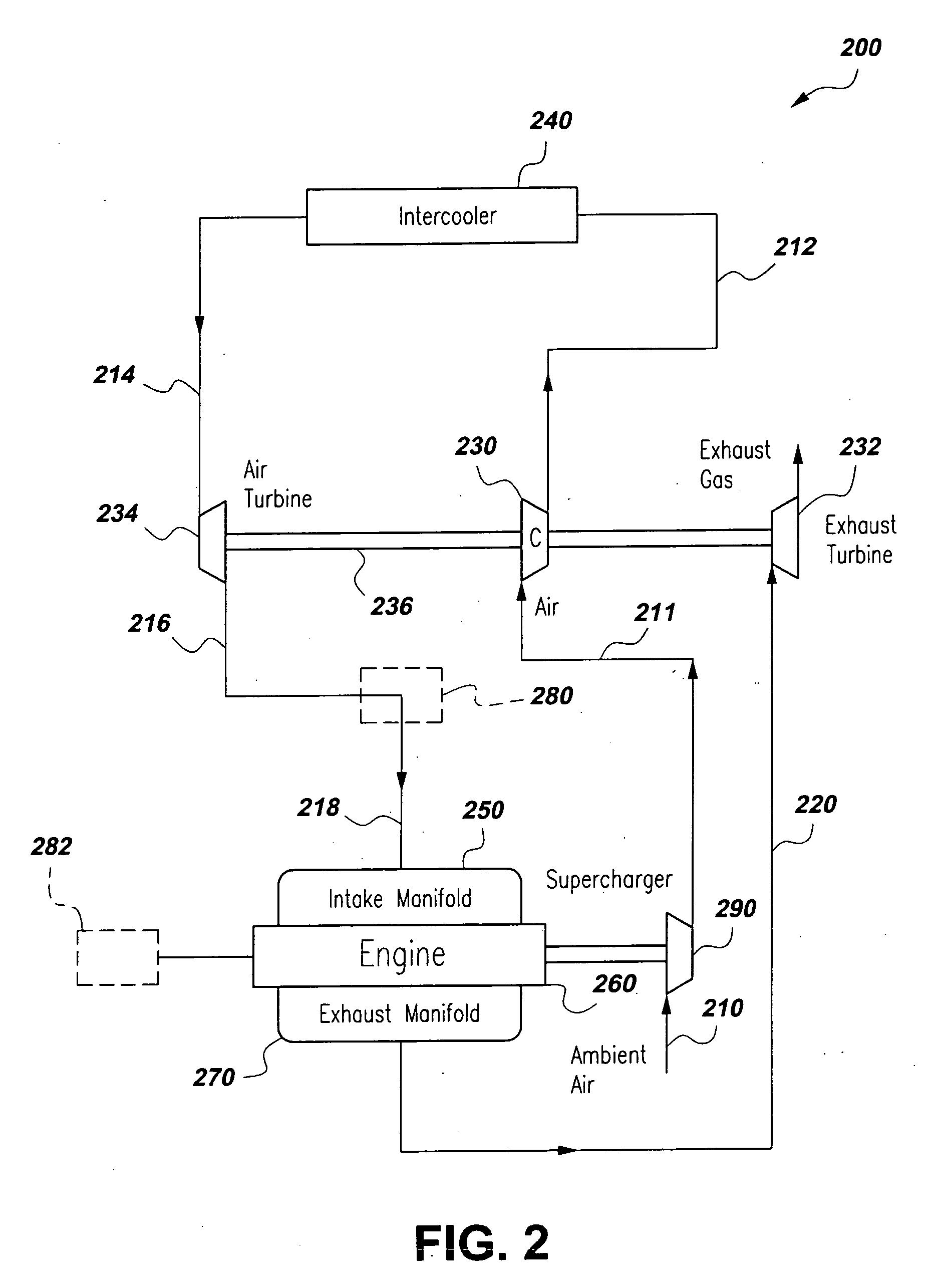Turbocharged intercooled engine utilizing the turbo-cool principle and method for operating the same
a technology of intercooling engine and turbocool, which is applied in the direction of combustion engine, internal combustion piston engine, machine/engine, etc., can solve the problems of affecting reducing the efficiency of the engine, so as to improve the rated power, improve the thermal efficiency, and reduce the effect of thermal loading
- Summary
- Abstract
- Description
- Claims
- Application Information
AI Technical Summary
Benefits of technology
Problems solved by technology
Method used
Image
Examples
Embodiment Construction
[0034] Hereinafter, preferred embodiments of the present invention will be described with reference to the accompanying drawings. In the following description of the present invention, a detailed description of known functions and configurations incorporated herein will be omitted to keep the subject matter of the present invention clear.
[0035] The present invention provides a turbocharged-intercooled engine utilizing the turbo-cool principle and method for operating the same. A turbocharged intercooled engine according to the present invention operates according to the turbo-cool principle. The engine has an air turbine for turbo-expansion cooling. The air turbine is coupled to a compressor so intake air pressure loss as a result of turbo-expansion is partially compensated by pressure gain due to the compression process. This use of an air turbine and its coupling to a compressor define the essence of the turbo-cool principle.
[0036] A better understanding of the method can be obt...
PUM
 Login to View More
Login to View More Abstract
Description
Claims
Application Information
 Login to View More
Login to View More - R&D
- Intellectual Property
- Life Sciences
- Materials
- Tech Scout
- Unparalleled Data Quality
- Higher Quality Content
- 60% Fewer Hallucinations
Browse by: Latest US Patents, China's latest patents, Technical Efficacy Thesaurus, Application Domain, Technology Topic, Popular Technical Reports.
© 2025 PatSnap. All rights reserved.Legal|Privacy policy|Modern Slavery Act Transparency Statement|Sitemap|About US| Contact US: help@patsnap.com



